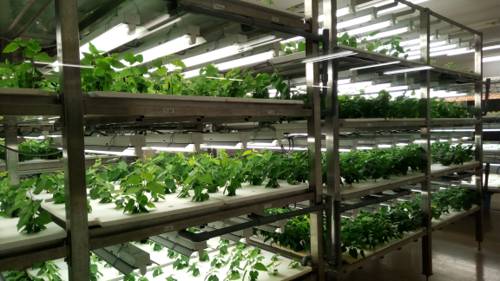
FAQ About Hydroculture Techniques for Indoor Plants

What is hydroculture and how does it differ from traditional soil-based gardening?
Hydroculture is a method of growing plants without soil, using mineral nutrient solutions in water. The primary difference between hydroculture and traditional soil-based gardening is the medium used for growing. In hydroculture, plants receive nutrients directly from the water, while soil provides nutrients and physical support in traditional gardening. This method allows for more controlled nutrient management and can lead to faster growth and higher yields.

What are the main benefits of using hydroculture techniques for indoor plants?
Hydroculture offers several benefits for indoor plants, including reduced pest problems, as soil is often a breeding ground for insects and diseases. It also allows for precise control over nutrient supply, leading to healthier plants with potentially faster growth. Additionally, it requires less maintenance, no soil means less mess, and it's a more sustainable approach as water is recirculated, reducing waste.

Which indoor plants are most suitable for hydroculture?
Several indoor plants adapt well to hydroculture, including ferns, ivy, monstera, peace lilies, philodendrons, and pothos. These plants thrive in nutrient-rich water environments and can handle moisture conditions typical of hydroculture setups.

How can I start growing plants using hydroculture at home?
To start hydroculture at home, you'll need a container, water, a nutrient solution, and a plant that is suitable for hydroculture. Begin by selecting a container that can hold water and is suitable for indoor use. Add a nutrient solution to the water based on the needs of the plants. Then, place the plant, its roots washed of soil, into the container, ensuring that only the roots are submerged.

Do hydroculture techniques require specific equipment?
While advanced hydroculture setups can involve specific equipment such as grow lights, timers, and pumps, beginners can start with simple containers, a nutrient solution, and a pH meter to monitor water conditions. As you become more experienced, you may decide to invest in automated systems for convenience and optimized growth conditions.

What are common challenges faced in hydroculture gardening?
Common challenges in hydroculture include maintaining the right nutrient balance and pH levels, which are crucial for plant health. There's also the risk of waterborne diseases if the system isn't kept clean, and potential algae growth in bright conditions. Regular monitoring and maintenance are key to overcoming these challenges.

How often should you change the water in a hydroculture system?
Water in a hydroculture system should typically be changed every two to three weeks. This helps prevent nutrient imbalances and the buildup of any pathogens or algae. Regular monitoring of nutrient levels and water quality is essential to ensure plants receive optimal conditions for growth.

Can all plants be grown using hydroculture?
Not all plants are suitable for hydroculture. Plants that require specific soil conditions, such as succulents or those needing very dry environments, typically do not adapt well to water-based growing systems. However, many common houseplants can be grown successfully using hydroculture techniques.

Is hydroculture more environmentally friendly compared to traditional gardening?
Hydroculture can be more environmentally friendly as it typically uses less water due to the recirculation of nutrient solutions, reducing water waste. Also, by eliminating the need for soil, erosion and soil depletion issues are avoided. However, the environmental impact can vary based on the energy use of certain systems, especially those with artificial lighting and climate control.

What nutrient solutions are best for hydroculture systems?
Nutrient solutions specifically formulated for hydroponics are best for hydroculture systems as they contain a balanced mix of essential minerals and nutrients needed for plant growth. It's crucial to follow the instructions regarding concentration and mixing, and to test the solution regularly to make any necessary adjustments.

How do you ensure plants are getting enough light in an indoor hydroculture setup?
To ensure plants in an indoor hydroculture setup receive adequate light, you might need to position them near windows or invest in grow lights, which mimic natural sunlight. Light intensity and spectrum should match the needs of the specific plants you are growing, which can vary widely depending on the species.

Can you use tap water for hydroculture, or is distilled water necessary?
Tap water can be used for hydroculture, but it needs to be tested for pH and adjusted accordingly, as well as for any impurities that might harm the plants. Distilled water, while free of minerals and impurities, requires the addition of all necessary nutrients manually.

Are there cost advantages to using hydroculture methods over traditional methods?
Hydroculture can be cost-effective in the long term due to reduced water and fertilizer usage and potentially lower pest control costs. The initial setup might be more expensive due to equipment and nutrient solutions, but maintenance costs can be lower, especially with systems that conserve and recycle water and nutrients.

How does the growth rate of plants in hydroculture compare to those grown in soil?
Plants grown in hydroculture often have faster growth rates compared to those grown in soil. This is due to the direct access plants have to nutrients in the water, allowing for more efficient uptake and less energy spent on root development seeking nutrients in the soil.

What types of containers are suitable for hydroculture?
Containers suitable for hydroculture include glass jars, plastic pots, and specially designed hydroponic containers which support good drainage and aeration. The container should be opaque to prevent algae growth by minimizing light exposure to the water.

Can you switch a soil-grown plant to a hydroculture system?
Yes, a soil-grown plant can be transitioned to a hydroculture system. This involves carefully cleaning the roots to remove all soil, cutting away any damaged root material, and gradually acclimating the plant to its new environment by initially placing it in a water-rich medium.

What is the role of pH in hydroculture systems?
The pH level in hydroculture systems is crucial as it affects the availability of nutrients to the plant. Most plants thrive in a pH range of 5.5 to 6.5. It's important to regularly check and adjust the water’s pH to ensure it remains in the optimal range for plant growth.

How does hydroculture impact the taste of edible plants?
Hydroculture can affect the taste of edible plants, often resulting in more intense flavors. The controlled nutrient environment can enhance the concentration of essential oils and sugars, leading to more flavorful herbs and vegetables.

What is the difference between hydroculture and hydroponics?
While both hydroculture and hydroponics involve growing plants in water-based environments, hydroculture is a broader term that can include any form of soil-free plant cultivation, whereas hydroponics specifically refers to the use of nutrient solutions to meet all of a plant's nutrient needs, often involving more sophisticated systems and techniques.
